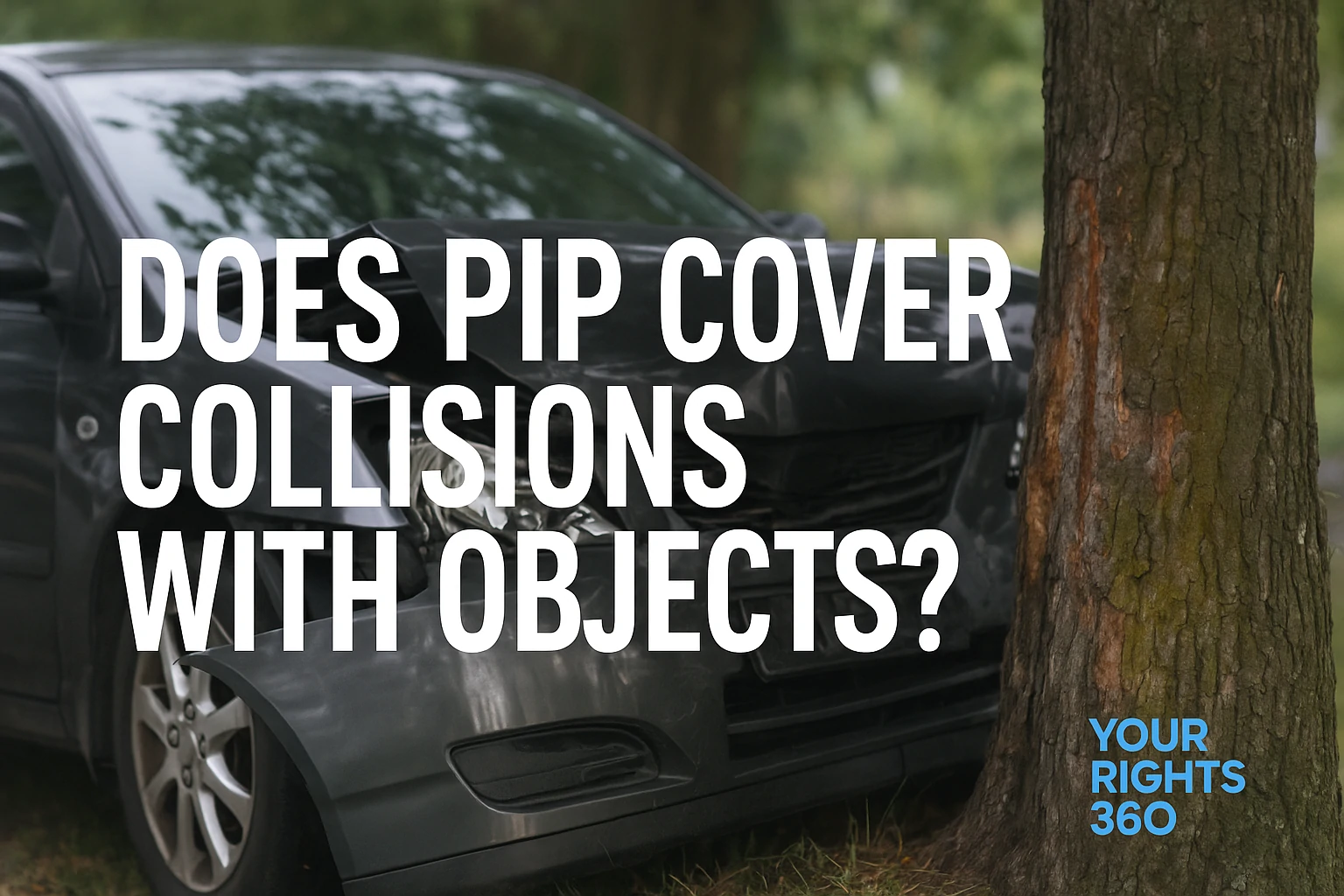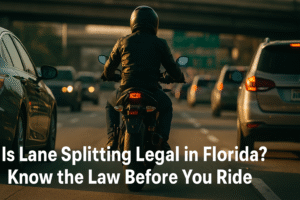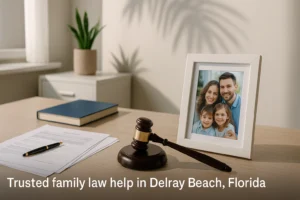A car crash can happen fast. One wrong turn can lead to a pole, a tree, or a guardrail. After the shock fades, questions rise. Who pays for the damage? Will your insurance help? What if you hit an object, not another car?
Many drivers believe personal injury protection covers everything. But that is not true. This part of your insurance only does one job. It covers medical bills from an accident. It does not cover damage to your car. It does not pay for broken fences or smashed mailboxes.
Drivers need to know the facts. Each part of a car policy plays a different role. If you understand what personal injury protection does, you can plan better. You can avoid surprise bills and get the right help after a crash.
This article explains how personal injury protection works. It also shows what happens when you hit an object. You will learn which part of your insurance helps and what steps to take after the crash.
What Personal Injury Protection Really Covers
Personal injury protection, often called PIP, helps with injury costs after a crash. It pays medical bills fast. It works no matter who caused the accident. If you get hurt in your car, PIP helps you. If your passenger gets hurt, PIP helps them too.
Some states require PIP. Others offer it as an extra. Either way, it can help when you need quick care. Many drivers use it to cover costs their health insurance does not pay. PIP can also cover lost wages, rehab, or funeral expenses.
But it stops at injuries. It does not cover damage to your car. It will not fix a broken bumper or a cracked windshield. That leaves many people confused after they hit something.
Collision with an Object: What Happens Next
You swerve and hit a pole. You’re not badly hurt, but your car is in bad shape. This is not a crash with another driver. It is a single-car accident with an object. That makes a big difference.
Personal injury protection will pay for your trip to the hospital. It may also help if you miss work. But it will not pay to fix your car. It does not handle property damage. It does not matter if the pole broke or if the tree fell over. PIP is only for your body—not your vehicle.
To fix the car, you need something else. That is where collision coverage comes in. Collision is a different part of your policy. It covers damage when you hit something, even if no one else is involved. If you have it, your repairs may be covered.
Without collision coverage, you must pay out of pocket. That can cost hundreds or thousands of dollars. Many drivers do not find this out until it’s too late.
Passengers, Pain, and Payment
If you hit a guardrail and your friend gets hurt, PIP helps them too. It does not matter who was driving. Your PIP covers injuries in your car. Some states also let passengers use their own PIP if they have it.
Still, the rule stays the same. No damage coverage. Only injuries. Your friend’s medical bills may be paid. But if their bag, phone, or laptop was damaged, PIP will not help. That kind of loss is not part of its job.
When Animals or Objects Are in the Road
Some crashes involve animals. You may hit a deer, dog, or even a cow. Others involve random objects—a mattress, a tire, or road debris. Drivers often ask if PIP helps in these cases.
If you get hurt, PIP still works. It pays for medical treatment. But the damage to your car follows a different rule.
Animal crashes often fall under comprehensive coverage. Hitting a deer or running into a wild animal is not a collision with another car or object. It is something outside your control. That is why it needs a different type of protection.
But hitting a fallen tree, a signpost, or a fence counts as a collision. That falls under collision coverage. Personal injury protection never changes. It only helps your body. Not the car. Not the tree. Not the road.
Real Example: Simple but Costly
Emma drives through a dark street. A fallen branch blocks her lane. She crashes into it. Her chest hits the wheel. She has bruises and needs a hospital visit. Her car has a broken headlight and a dented hood.
Emma has PIP. That covers her ER visit. It helps her take a day off work. But it does not fix her car. That cost goes to her collision insurance. If she did not buy it, she must pay on her own.
This is the kind of moment that makes drivers look twice at their policy. PIP is helpful—but only if you understand its limits.
Does Your State Require PIP?
Not every driver has personal injury protection. Some states make it a legal must. These are called no-fault states. In these places, drivers turn to their own PIP first, no matter who caused the crash.
States like Florida, Michigan, New York, and New Jersey have strong no-fault laws. In other states, PIP is a choice. You may have it and not even know. You may not have it and still assume you do.
That is why it matters to read your policy. Know what you pay for. Know what help you can expect. Ask your insurer if you are not sure. A five-minute call can prevent a big loss.
What If You Don’t Have PIP?
Some drivers choose not to buy PIP. In places where it’s optional, they may rely on health insurance instead. That works—but only sometimes. Health plans often have deductibles. They may limit your care choices. They may also move slow.
PIP moves fast. It handles small injuries without court battles or delays. That makes it worth considering even if your state does not force it.
Without PIP, you also lose coverage for lost wages and home help. Those benefits can matter more than many people think.
What to Do After You Hit Something
If you crash into an object, stay calm. First, make sure you are safe. Then call for help if needed. Once the scene is stable, take photos. Note the damage. Write down details about what happened.
Next, call your insurance company. Report the crash. Tell them if you are hurt. Ask them what your policy covers. Ask if PIP or collision applies. They will guide you from there.
Keep records of any medical visits. Save repair bills. These may be needed to support your claim.
Why You Need More Than One Type of Coverage
Car insurance has many parts. Each one helps in a different way. Personal injury protection helps your body. Collision helps your car. Comprehensive helps when nature or theft steps in. Liability helps when you cause harm to others.
No single type covers everything. If you skip one, you take a risk. That risk may seem small—until the day it hits.
Smart drivers look at the big picture. They buy coverage that fits real life. They ask questions and review policies once a year. That habit can save money, time, and stress.
Understanding what PIP covers is important, especially if you plan to seek more through a claim or need to know can you win a personal injury lawsuit.
Conclusion
Personal injury protection helps after a crash. It pays for medical costs fast. It does not wait for court fights. It gives peace of mind when you feel hurt or shaken.
But it does not fix your car. It does not cover crashes with poles, trees, fences, or other objects. That is not part of its job. Collision and comprehensive coverage handle that part.
Knowing this now can save you later. If you hit something and only have PIP, you will face repair bills on your own. If you want full protection, you need more than just PIP. You need to build a smart insurance plan.
Talk to your provider. Ask what your current policy covers. Make sure you have the help you need before an accident happens.
Disclaimer
This article is for general information only. It does not give legal or insurance advice. Policy terms and state laws may vary. Speak with a licensed insurance agent or attorney to understand your specific coverage.




